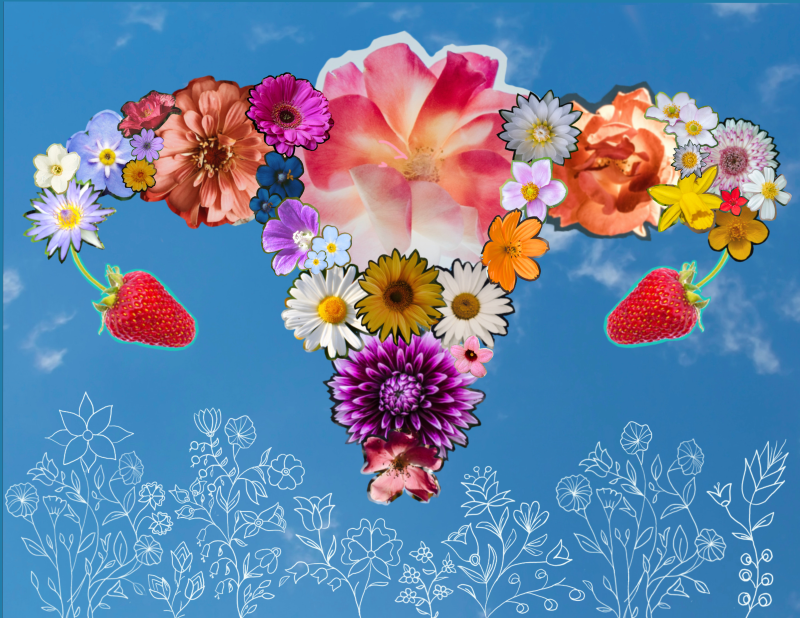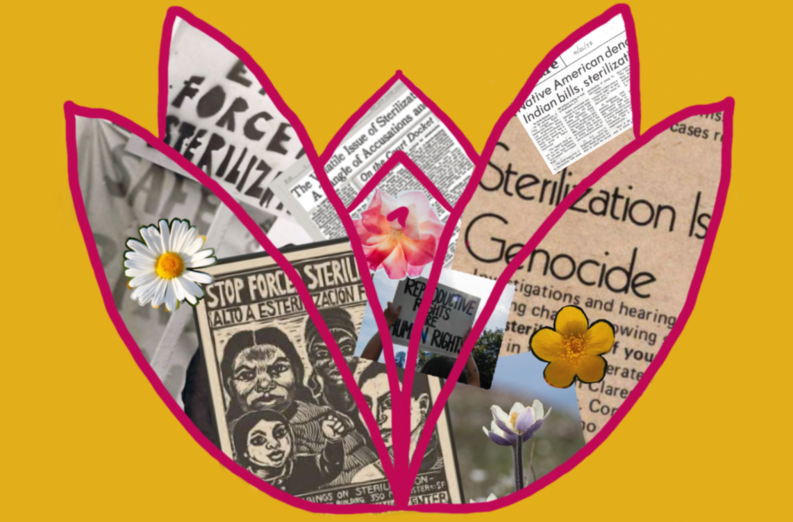About the Artist
Over the last year, WFM has collaborated with Indigenous institutions and supported organizations that champion women’s reproductive rights. These partnerships are reflected in the artistry of Dani Vazquez. She has created a piece using plants that Indigenous communities have used for centuries to help support women’s health.

Strawberry plants, buttercups (certain types), and roses (specifically rosehips) are plants used to support women's health.
Artwork Overview
By Dani Vasquez
Historically, Indigenous women have been the victims of violent colonial practices.
It is estimated that throughout the early 1960s and 1970s, between 30% and 50% of Indigenous women were coercively, forcibly, or unwittingly sterilized through tubal ligation or hysterectomy (Ralstin-Lewis, 2005) at the hands of the federal government. Although forced sterilizations and other forms of violence had been inflicted upon Indigenous women since European contact, this rise in sterilizations can be contributed to the Family Planning Services Act passed by Congress in 1970, which subsidized sterilizations for Medicaid and Indian Health Service patients (Ralstin-Lewis, 2005).
Since then, the path to reproductive freedom for Indigenous women is still plagued with barriers.
This piece of art will serve as a reminder that before the onset of colonization, Indigenous women were regarded as the cornerstone of resilience and strength in their communities. Indigenous women had full autonomy over their bodies and had extensive knowledge of the ecosystem and specific plants that aided in their reproductive health– menstruation, birth control, abortion, the birthing process, after birth, and menopause.
With this artwork, I hope to bring to life a little part of this history, while also capturing the beauty of Indigenous medicine.
"A nation is not conquered until the hearts of its women are on the ground. Then, it is done, no matter how brave its warriors nor how strong its weapons" - Cheyenne Proverb

About Dani Vasquez:
Dani is an enrolled member of the Chippewa-Cree Tribe, growing up primarily on the Rocky Boy Indian Reservation in north-central Montana. Dani is the Communications and Organizing Manager at Montana Women Vote. In her free time, Dani enjoys daydreaming about public art, watching horror films, and laughing at memes. Her nephew has the best sense of humor and she's obsessed with Bad Bunny.
Citations and Resources:
D. Marie Ralstin-Lewis. (2005). The Continuing Struggle against Genocide: Indigenous Women's Reproductive Rights. Wicazo Sa Review, 20(1), 71-95. Retrieved from http://www.jstor.org/stable/4140251
Hellson, J. C., & Gadd, M. (1974). Plants Used In Birth Control. Ethnobotany of the Blackfoot Indians, (19), 56–61.
Action Alert: Sign On to Amicus Brief in Dobbs v. Jackson Women's Health Organization | NIWRC
